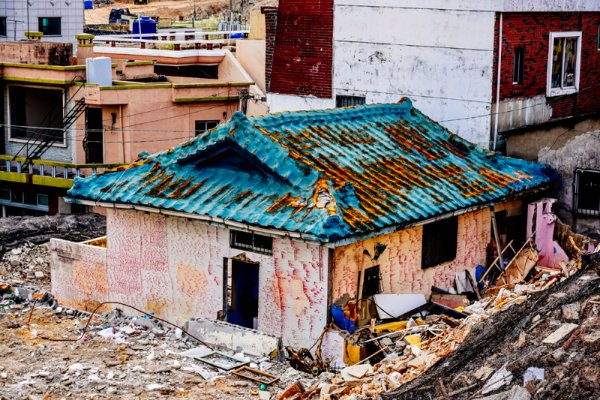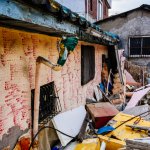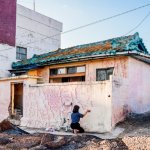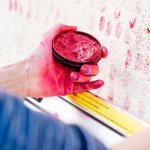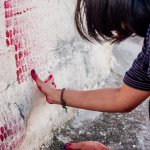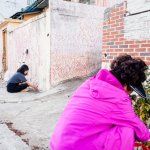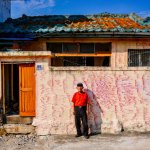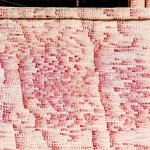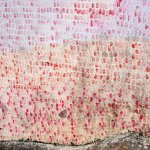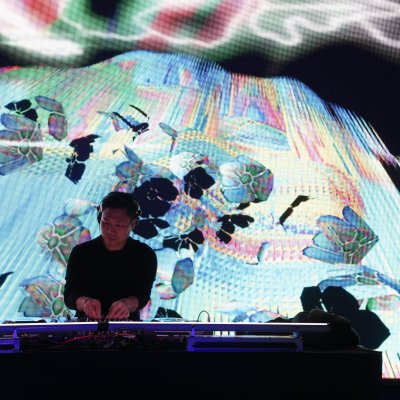In Seoul places that are supposed to disappear are marked with red paint. PLATOON member and one of the first street artist in South Korea, Jazoo Yang is putting up artistic resistance. Read the full article below and find out more about her mysterious red thumbprints.
Text: Suzy Park (Curator, B-art editor)Photo: Young-moon Ha
We start our day by checking social media. Newsfeeds are filled with death. There are too many unrecorded deaths in this world where we are living, where things are collapsing, disappearing, and dying everyday.Not all of the deaths are caused by war or natural disaster. A lot of deaths are caused by big powers growing more powerful and oppressing smaller powers, leaving them isolated. If death means loss, one might believe we could restore the loss by memory and documentation. Maybe that is why people constantly share, retweet, and like the news of international disasters. However, the simple action of touch is not enough to resolve the anger and vast emptiness in us. What should we remember and how? For artist JAZOO Yang, these are natural questions rather than something chosen. The artist also uses her thumb, but where she touches is somewhere different.
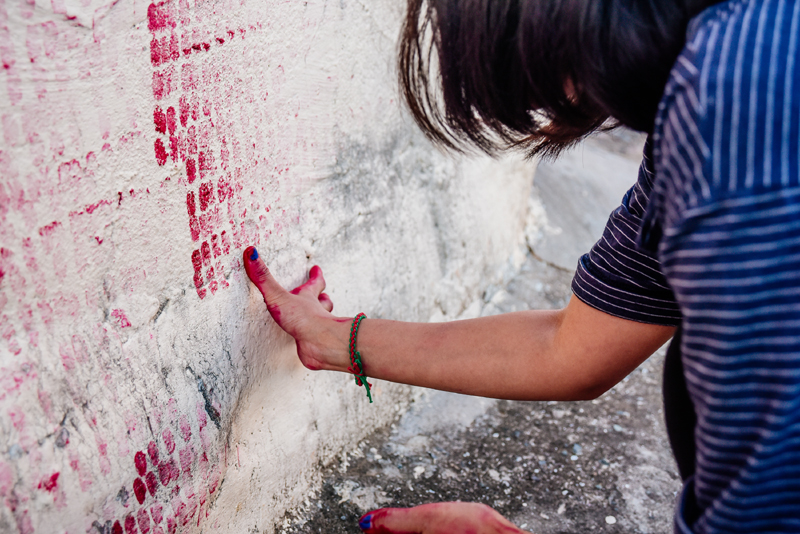
Before writing this article, I looked around the Motgol[1] with artist JAZOO Yang and photographer Young-moon Ha, which is ruined and filled with building waste now. At that point, the artist had already finished her project in a vacant house in the Motgol, visiting there 2-3 times a week. The landscape of the village reminded me of scenes after a war in photographs. Under a huge billboard that read DaeyeonㅇㅇDistrict Housing Reconstruction and Maintenance Project and loomed over the landscape, there were a few houses that looked unstable and were marked with red paint that said Gonga, Albagi[2], or Demolition. Most of the houses there had already been completely torn down by a few swings of a crane. I couldn’t help feeling helpless for some reason.

JAZOO Yang has worked on demolition fields before, like in Ahyeon-dong(Seoul) or New Town Wangsimni. She collected building waste as objects and drew on them; engraved repetitious images on site; and made an altar that she carried around the site. In this project, Dots: Motgol66, it seems like she became more sensitive, like the wall through which she feels the world became much thinner. Holding an Inju[3] in one hand, she fills the outer wall of a building with her thumbprints from the other hand. She prints her finger on the wall until the ink on her thumb fades away and then inks her thumb again and keeps printing, repeatedly and steadily. Being asked why she didn’t make all the marks clear, she said, “I realized that time is a space. The mark fading away is an expression of the flow of time and space itself.” For me, the comment was the clearest answer that represents remembering, since the constant action of marking her thumb during the time that she stayed in the space is the action of remembering the space.
If you think about the red handprints that were found with the oldest mural in the world in France’s Chauvet Cave in 1994, the act of hand printing must be quite primal. From written pledges to contracts, now the thumbprint[4] has more social meaning than before. Once, a demolition worker approached the artist and startled her, saying, “What are you doing here? Is it like a million won for each thumbprint? Why don’t you make the title of this work ‘Rush and Cash[5]’?” In another episode after that, the demolition worker taught her how to use the Inju properly, saying it should be mixed with water.
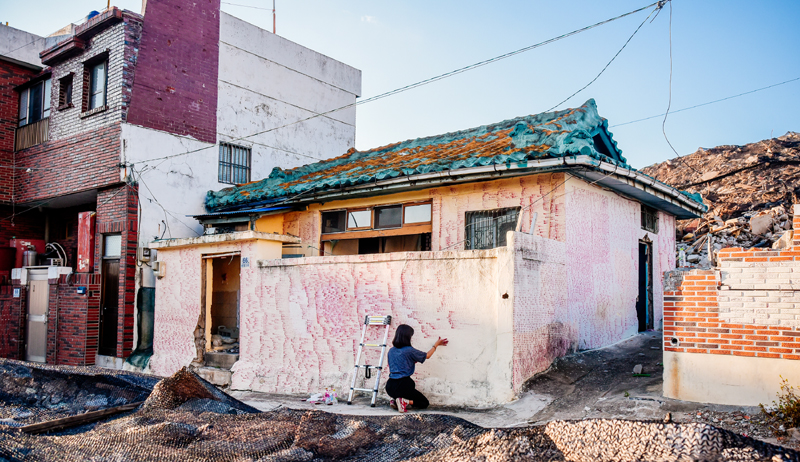
The artist connects with the place by printing red thumbprints on the wall that are supposed to disappear. The red color, that used to look brutal and grotesque in the artist’s previous work, is now added with the artist’s own warmth and wrinkle (fingerprint) that moves on to the cold wall. The cold wall shows us the loss of the village, community, neighborhood, people, and looks sad among the ruins where no one can live anymore. The neighbors of Motgol who didn’t leave yet are frustrated about living in a dumpster and being isolated in a place that is filled with the threatening sound of demolition workers banging at their gates with a steel pipe. Maybe the fact that someone is visiting the abandoned village is a consolation for them, since some people ask the artist to do the work on their wall which had been spoiled with the red paint that says ‘Demolition’.
The process of her projects is a way to remember the place on the one hand, and a way to resist the power of capital on the other hand. Against the neo-liberalist value that destroys and regulates things that don’t meet capitalist interests, the artist says, “In an era like this, fragile and vulnerable things become even more valuable.” Dots: Motgol66 is the time and space that the artist left in a place that is going to be gone eventually. By working directly on site, she built a strong barricade that fundamentally prevents seizing capital from it.
Read PLATOON MAGAZINE article about Jazoo Yang: Contemporary Expresionism.
- - -
[1] A small village located in Busan, Korea. Now the village is being torn down due to a reconstruction project.
[2] Meaning vacant house and illegal occupation respectively. Usually, construction companies mark these words with red paint on houses with tenants that resist moving out.
[3] An ink-soaked pad used for inking a stamp or taking fingerprints. Usually it is made of castor oil and silk from cocoons.
[4] An impression or mark made on a surface by the inner part of the top joint of the thumb, especially as used for identifying individuals from the unique pattern of whorls and lines. A thumbprint on a contract between individuals or public offices has legal force.
[5] One of the biggest credit loan companies in Korea.


